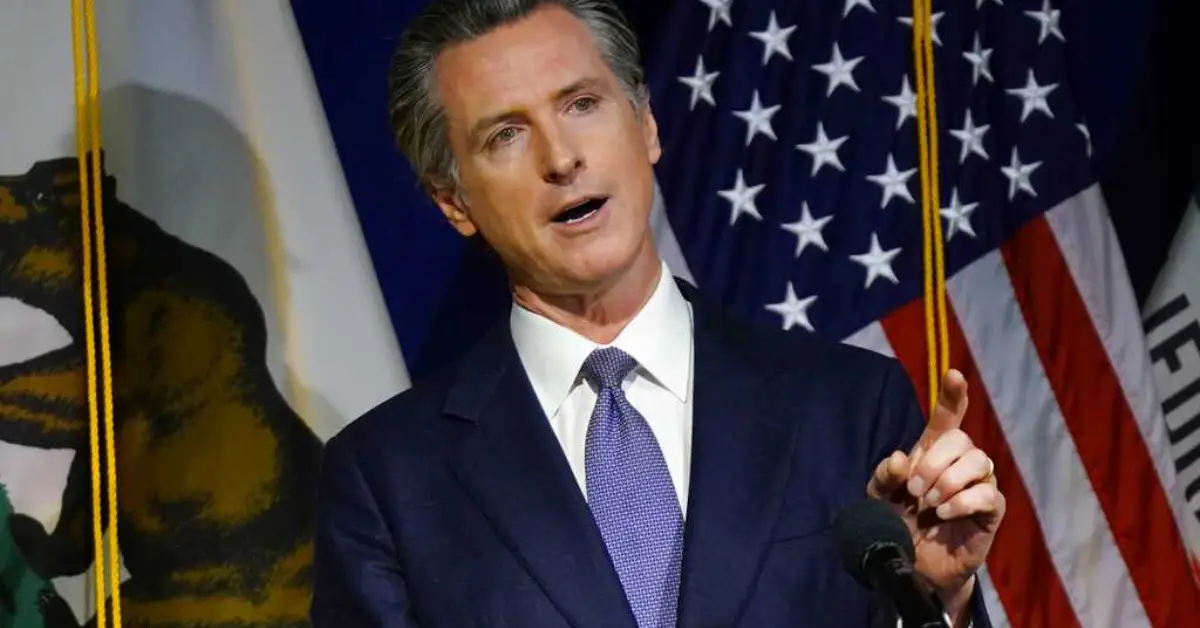California Gov. Gavin Newsom’s Proposed Budget: Even as a persistent storm system pummeled California’s coast, Gov. Gavin Newsom (D) on Tuesday announced a 2023 state budget proposal that calls for significant cuts to investments in tackling climate change.
The governor attributed California’s projected $22.5 billion budget imbalance for the fiscal year 2023–2024 to decreases in withholding and capital gains taxes.
Furthermore, despite the state’s $35.6 billion in budgetary reserves, including $22.4 billion in its “budget stability account,” the deficit has forced some significant cuts across the board.
At a news conference where he unveiled the revised budget proposal, Newsom stated, “We’re not touching the reserves because we have a wait-and-see approach to this budget.”
“We are in a very volatile moment,” the governor added, noting that the budget will be revised in May when “there’s more clarity.”
Newsom stressed that the new budget proposal left most climate efforts unaffected despite the flaws.
“We’ll continue to do more than any other state in America and no significant impacts on this budget: wildfires, drought, yes, and floods — all the climate bucket,” the governor said.
However, his budget proposal retains only $48 billion in climate investments over the following five years or 89 percent of the $54 billion allocation from the previous year.
If the state legislature approves the budget proposal, several vital initiatives will suffer significant cuts even though the proposal contains many new climate investments.

The most significant addition to the proposal’s additional investments is $201.1 million for flood protection in California.
“Investments in floods are top of mind,” Newsom added.
“I’ll be off after this, down to the Central Coast,” the governor added, recalling the “conveyor belt of storms” that have been hammering the region.
A general fund of $40.6 million would be used to lessen the risk of levee failures and floods, while a general fund of $135.5 million over two years would assist in supporting the reduction of urban flood risk.
According to the budget outline, an additional $25 million would explicitly support initiatives that lower the likelihood of flooding in California’s Central Valley.
Other new climate expenditures mentioned in the proposal besides flood-related money include a $125 million drought contingency fund and $31.5 million for updating water rights.
The San Joaquin River Basin’s groundwater recharge program, investments in urban water consumption, and planning and permitting for projects involving clean drinking water and waste disposal are also covered.
However, many climate programs would be scaled back because of the glaring deficiency.
The proposal would delay an additional $270 million to 2024–2025 and cut $24 million from 2023–2024 financing for water resilience programs, leaving $470 million, or 95%, of that amount available for such activities.
A reduction of $70 million and a postponement of $30 million to 2024–2025 would affect cleaning operations for dangerous substances while still keeping 65 percent, or $130 million, of those resources available.
The budget proposal also reduced funding for water recycling programs, water efficiency initiatives, floating solar panels investigations, and school water replenishment programs.
The last category would be removed entirely, while the first three would be lowered to 95%, 75%, and 57% of their prior levels, respectively.
With a focus on expanding access to sustainable mobility for underserved and low-income regions, the budget would preserve 89 percent, or $8.9 billion, of investments in zero-emission vehicles.
The 2022 budget allocated $13.8 billion for more extensive transportation projects and programs; however, the 2023 proposal would cut that amount by $2.7 billion, partially offset by $500 million from state transportation appropriations.
The proposal states that these changes would allow the state to keep 84 percent of its transportation investments.
The proposal said that California continues to benefit from the $38 billion formula financing for highway and transportation it received under the federal bipartisan infrastructure program.
The budget keeps 89 percent, or $7 billion, of the $7.9 billion investment made in energy initiatives last year.
The new budget proposal keeps 97 percent, or $2.7 billion, of the previous year’s $2.8 billion commitment to wildfire and forest resilience.
A setback distance between homes and new oil wells was established by a law implemented in 2022. The budget also contains monies to support proposals to build carbon removal targets and progress toward a clean electricity infrastructure.
The budget proposal also includes funds to help with dam removal, enhance river health, and address fish losses in the Klamath Basin.
By reminding reporters that California has already received $48 billion through federal legislation signed into law by President Biden, Newsom justified the cuts to climate spending within the budget.
According to him, this federal money “not only fills that bucket back up but significantly increases the entire investment.”
Newsom and his colleagues emphasized the uncertainty of whether such federal funding would materialize when putting together the transportation and climate budgets for the previous two years.
“Few of us were confident that Congress — Machin, Sinema, Manchin, Sinema, Sinema Manchin, remember those days? — would put together two great historic packages,” the governor added.
Newsom was alluding to the Inflation Reduction Act, the Biden administration’s budget for climate change that was approved on party-line votes in the House and Senate, and a bipartisan infrastructure plan. Sens. Kyrsten Sinema (I-Ariz.) and Joe Manchin (D-W.Va.) participated in negotiations on both proposals and significantly impacted the size reduction of the Inflation Reduction Act.
Newsom’s budget proposal changes many vital areas outside of environmental spending.
According to a fact sheet attached to the budget, the proposal includes funding to develop a new grade below kindergarten to serve 450 000 kids annually.
The program also includes expenditures for child care, lower-cost higher education, a move toward debt-free college, and investments in free lunches for all students.
The proposed budget includes funds to expand housing options, combat homelessness, and improve access to medical care in California.
“We are protecting the most vulnerable Californians, despite the situational challenge, and continuing unprecedented, medium- and long-term investments into the next generation,” the governor added.



Leave a Reply